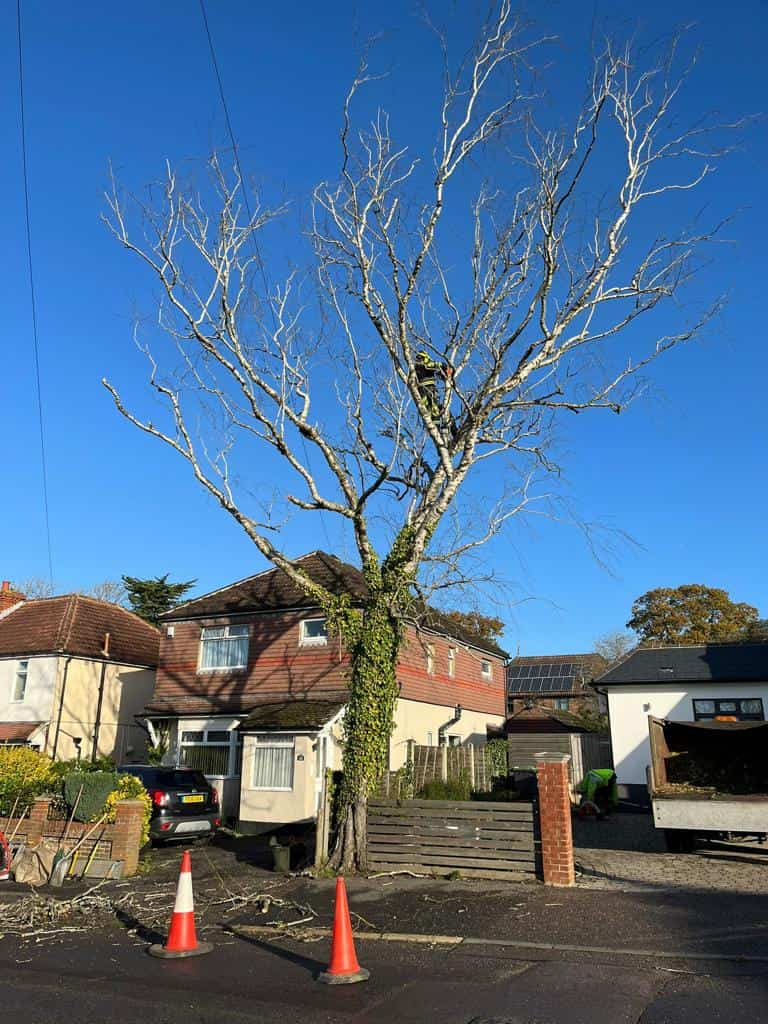Tree maintenance is a key part of preserving the health and appearance of your garden or property. Among the various tree care techniques, proper tree reduction plays a pivotal role in maintaining the natural shape and overall structure of trees. In this blog post, we’ll explore what tree reduction involves, how it helps preserve a tree’s health, and why it’s important to seek professional services to achieve the best results.
What is Tree Reduction?
Tree reduction, often referred to as “crown reduction,” involves the careful and selective removal of branches to reduce the size or volume of a tree’s canopy. Unlike tree pruning, which focuses on removing dead or diseased wood, tree reduction is typically done to decrease the tree’s height or spread while maintaining its natural shape. This method is commonly used for trees that have outgrown their space or need to be reshaped for aesthetic or safety purposes.
The Benefits of Proper Tree Reduction
1. Preserving the Tree’s Natural Shape
One of the primary reasons for carrying out a tree reduction is to ensure the tree retains its natural shape. When performed correctly, tree reduction does not drastically change the tree’s appearance, but it helps it remain well-balanced. By removing excessive growth and thinning the canopy, the tree maintains its aesthetic value while still being functional in the landscape.
2. Improving Air Circulation and Light Penetration
Reducing the size of the tree’s canopy can improve air circulation and light penetration throughout the tree’s structure. This is particularly important for trees that are growing too densely, as it can reduce the risk of fungal infections, improve overall health, and encourage better growth for the tree and surrounding plants. Additionally, better airflow and light exposure can help maintain the tree’s natural form, avoiding the risk of it becoming misshapen over time.
3. Preventing Overgrowth and Damage
Overgrowth is a common issue in trees that are left unchecked. Excessive growth can lead to branches becoming too heavy and causing stress on the tree’s trunk and roots. This can result in weakened structural integrity, making the tree more susceptible to wind damage or disease. Regular tree reduction helps to prevent overgrowth, ensuring the tree remains strong and stable, reducing the likelihood of it causing damage to nearby structures or power lines.
4. Increasing Safety
Tree reduction is also crucial for safety. Trees with overextended branches can pose a risk to nearby buildings, vehicles, or pedestrians. By reducing the size of the tree’s canopy, particularly around high-risk areas, you can ensure that the tree does not become a hazard. Additionally, removing dead, weak, or broken branches during the reduction process helps reduce the chances of branches falling and causing injury or property damage.
The Proper Technique for Tree Reduction
Proper tree reduction requires both skill and knowledge, as incorrect techniques can lead to long-term damage or stress to the tree. A professional tree surgeon will take the following steps to ensure the job is done properly:
1. Assessment and Planning
Before beginning the reduction, the tree surgeon will assess the tree’s health, shape, and the surrounding environment. This assessment helps to determine how much of the tree needs to be reduced and ensures the tree’s structure is not compromised.
2. Selective Branch Removal
Unlike a severe trimming that indiscriminately cuts back branches, a proper reduction involves selectively removing branches in a way that preserves the tree’s shape. The goal is to reduce the tree’s size without removing too much foliage, which could negatively affect the tree’s health. The branches removed are typically the weakest or most overgrown ones, ensuring that the tree’s structure remains balanced and stable.
3. Cutting Back to the Right Growth Points
To ensure the tree regrows healthily, the branches are cut back to appropriate growth points, such as side branches or buds. This allows the tree to grow in a controlled manner, promoting new growth in the right direction without affecting the tree’s natural shape.
4. Post-Reduction Care
Once the tree reduction is complete, the tree surgeon will provide advice on how to care for the tree going forward. Regular monitoring is essential to ensure the tree remains healthy and the reduction is successful. Any signs of disease or pest problems should be addressed promptly to maintain the tree’s health.
Conclusion
Tree reduction is an effective and valuable technique for maintaining the natural shape of trees while ensuring their health and safety. By carefully removing excess growth and reshaping the tree, tree surgeons can help preserve the tree’s beauty and function for many years to come. However, tree reduction is a skilled job that requires professional knowledge and expertise to ensure it is done correctly.
If you are concerned about the growth of a tree on your property and want to preserve its natural form, it’s best to contact a professional tree surgeon. At Stansted Tree Surgeons, we offer expert tree reduction services that ensure the continued health and safety of your trees. Contact us today to book a consultation and keep your trees looking their best.
Call us on: 01279 744 790
Click here to find out more about Stansted Tree Surgeons
Click here to complete our contact form and see how we can help with your tree care needs.

